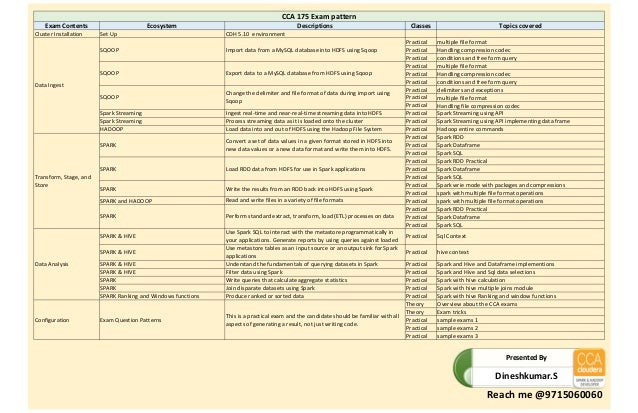- Having a good cheatsheet at hand can significantly speed up the development process. One of the best cheatsheet I have came across is sparklyr’s cheatsheet. For my work, I’m using Spark’s DataFrame API in Scala to create data transformation pipelines. These are some functions and design patterns that I’ve found to be extremely useful.
- Scala:sh mkdir foobar res0: scala.tools.nsc.interpreter.ProcessResult = `mkdir foobar` (0 lines, exit 0) scala:sh touch foobar/foo res1: scala.tools.nsc.interpreter.ProcessResult = `touch foobar/foo` (0 lines, exit 0) scala:sh touch foobar/bar res2: scala.tools.nsc.interpreter.ProcessResult = `touch foobar/bar` (0 lines, exit 0) scala.
- Scala on Spark cheatsheet This is a cookbook for scala programming. Define a object with main function - Helloworld.
Spark Scala API v2.3 Cheat Sheet by Ryan (ryan2002) via cheatography.com/108946/cs/21509/ Data Sources - read (cont) jdbc url: The JDBC URL for Spark to connect to. Apache Spark & Scala; Search for. Scala Iterator: A Cheat Sheet to Iterators in Scala. Stay updated with latest technology trends Join DataFlair on Telegram!!

- Scala Tutorial
- Scala Useful Resources
- Selected Reading
This chapter explains how Scala supports regular expressions through Regex class available in the scala.util.matching package.
Try the following example program where we will try to find out word Scala from a statement.
Example
Save the above program in Demo.scala. Internal phone numbers az. The following commands are used to compile and execute this program.
Command

Output
We create a String and call the r( ) method on it. Scala implicitly converts the String to a RichString and invokes that method to get an instance of Regex. To find a first match of the regular expression, simply call the findFirstIn() method. If instead of finding only the first occurrence we would like to find all occurrences of the matching word, we can use the findAllIn( ) method and in case there are multiple Scala words available in the target string, this will return a collection of all matching words.
You can make use of the mkString( ) method to concatenate the resulting list and you can use a pipe (|) to search small and capital case of Scala and you can use Regex constructor instead or r() method to create a pattern.
Try the following example program.
Example
Save the above program in Demo.scala. The following commands are used to compile and execute this program.
Command
Output
If you would like to replace matching text, we can use replaceFirstIn( ) to replace the first match or replaceAllIn( ) to replace all occurrences.
Example
Spark Scala Cheat Sheet Printable
Save the above program in Demo.scala. The following commands are used to compile and execute this program.
Command
Output

Forming Regular Expressions
Scala inherits its regular expression syntax from Java, which in turn inherits most of the features of Perl. Here are just some examples that should be enough as refreshers −
Diode driver download for windows. Following is the table listing down all the regular expression Meta character syntax available in Java.

| Subexpression | Matches |
|---|---|
| ^ | Matches beginning of line. |
| $ | Matches end of line. |
| . | Matches any single character except newline. Using m option allows it to match newline as well. |
| [..] | Matches any single character in brackets. |
| [^..] | Matches any single character not in brackets |
| A | Beginning of entire string |
| z | End of entire string |
| Z | End of entire string except allowable final line terminator. |
| re* | Matches 0 or more occurrences of preceding expression. |
| re+ | Matches 1 or more of the previous thing |
| re? | Matches 0 or 1 occurrence of preceding expression. |
| re{ n} | Matches exactly n number of occurrences of preceding expression. |
| re{ n,} | Matches n or more occurrences of preceding expression. |
| re{ n, m} | Matches at least n and at most m occurrences of preceding expression. |
| a|b | Matches either a or b. |
| (re) | Groups regular expressions and remembers matched text. |
| (?: re) | Groups regular expressions without remembering matched text. |
| (?> re) | Matches independent pattern without backtracking. |
| w | Matches word characters. |
| W | Matches nonword characters. |
| s | Matches whitespace. Equivalent to [tnrf]. |
| S | Matches nonwhitespace. |
| d | Matches digits. Equivalent to [0-9]. |
| D | Matches nondigits. |
| A | Matches beginning of string. |
| Z | Matches end of string. If a newline exists, it matches just before newline. |
| z | Matches end of string. |
| G | Matches point where last match finished. |
| n | Back-reference to capture group number 'n' |
| b | Matches word boundaries when outside brackets. Matches backspace (0x08) when inside brackets. |
| B | Matches nonword boundaries. |
| n, t, etc. | Matches newlines, carriage returns, tabs, etc. |
| Q | Escape (quote) all characters up to E |
| E | Ends quoting begun with Q |
Regular-Expression Examples
| Example | Description |
|---|---|
| . | Match any character except newline |
| [Rr]uby | Match 'Ruby' or 'ruby' |
| rub[ye] | Match 'ruby' or 'rube' |
| [aeiou] | Match any one lowercase vowel |
| [0-9] | Match any digit; same as [0123456789] |
| [a-z] | Match any lowercase ASCII letter |
| [A-Z] | Match any uppercase ASCII letter |
| [a-zA-Z0-9] | Match any of the above |
| [^aeiou] | Match anything other than a lowercase vowel |
| [^0-9] | Match anything other than a digit |
| d | Match a digit: [0-9] |
| D | Match a nondigit: [^0-9] |
| s | Match a whitespace character: [ trnf] |
| S | Match nonwhitespace: [^ trnf] |
| w | Match a single word character: [A-Za-z0-9_] |
| W | Match a nonword character: [^A-Za-z0-9_] |
| ruby? | Match 'rub' or 'ruby': the y is optional |
| ruby* | Match 'rub' plus 0 or more ys |
| ruby+ | Match 'rub' plus 1 or more ys |
| d{3} | Match exactly 3 digits |
| d{3,} | Match 3 or more digits |
| d{3,5} | Match 3, 4, or 5 digits |
| Dd+ | No group: + repeats d |
| (Dd)+/ | Grouped: + repeats Dd pair |
| ([Rr]uby(, )?)+ | Match 'Ruby', 'Ruby, ruby, ruby', etc. |
Note − that every backslash appears twice in the string above. This is because in Java and Scala a single backslash is an escape character in a string literal, not a regular character that shows up in the string. So instead of ‘’, you need to write ‘’ to get a single backslash in the string.
Try the following example program.
Example
Spark Scala Cheat Sheet Example
Save the above program in Demo.scala. The following commands are used to compile and execute this program. Hitachi sound cards & media devices driver download for windows 10.
Command
Spark Scala Cheat Sheet Free
Output
